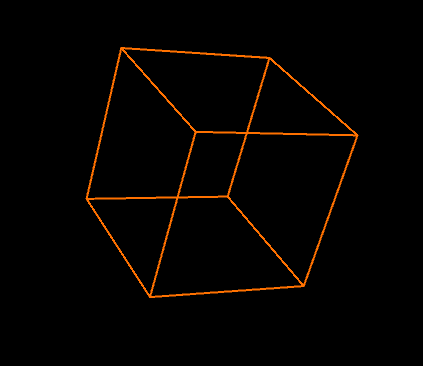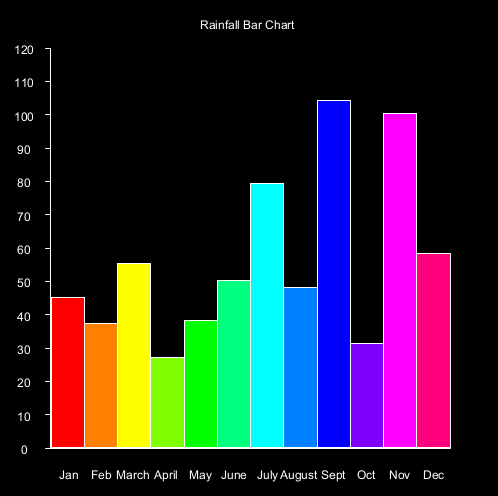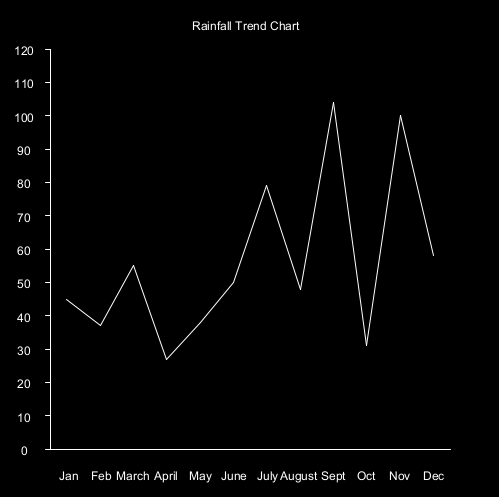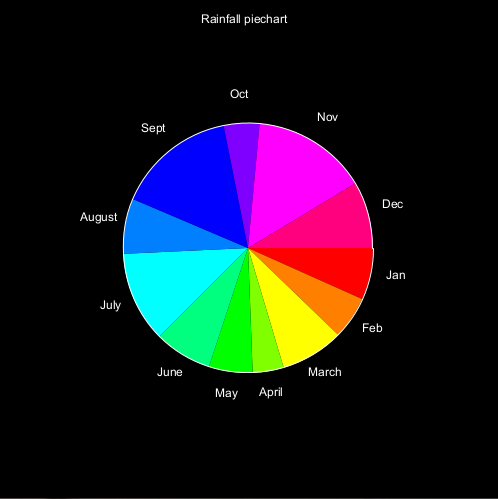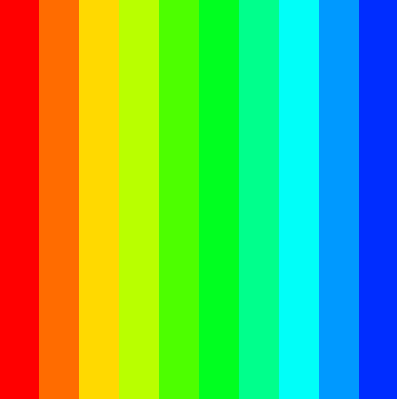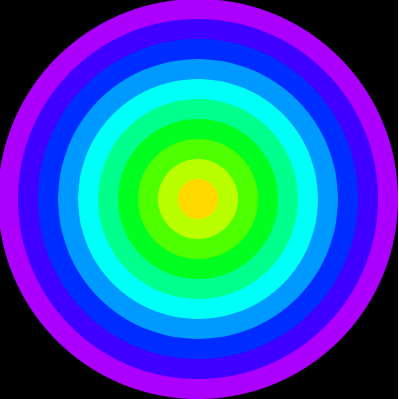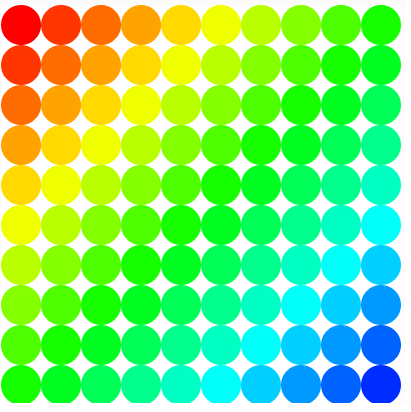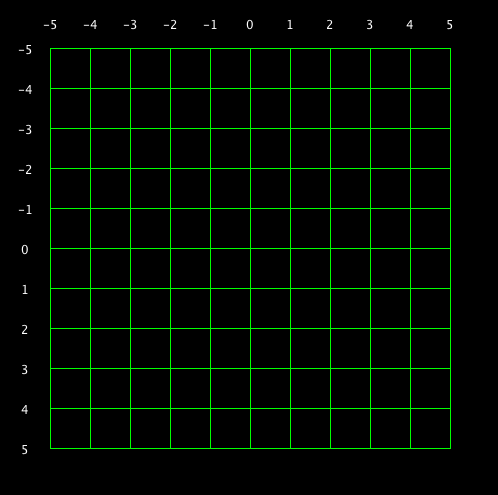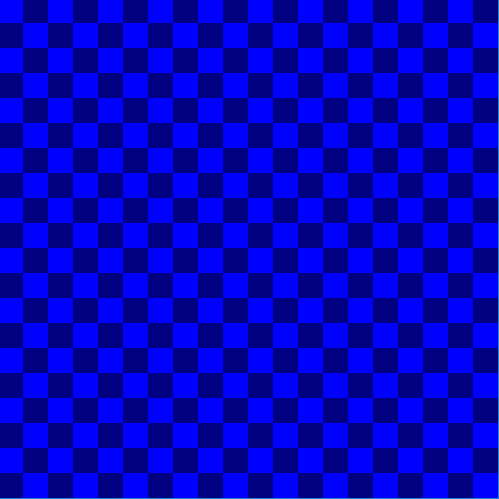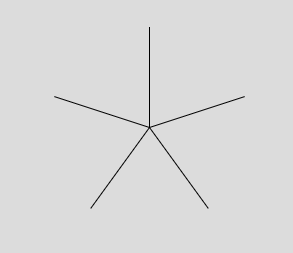- The Java Tutorial from Oracle
- Games Fleadh
- The Nature of Code
- The git manual - read the first three chapters
- A video tutorial all about git/github
- The Processing language reference
- Email: bryan.duggan@dit.ie
- Twitter: @skooter500
-
Week 11 Lab Test 20%
-
Week 12 Assignment Submission - 30%
-
End of Year exam - 50%
- https://github.com/skooter500/OOP-LabTest-2020-Starter
- https://github.com/skooter500/OOP-LabTest-2020/
- https://github.com/skooter500/OOP-Test-2019-Starter
- https://github.com/skooter500/OOP-Test-2019-Solution
- https://github.com/skooter500/OOP-2018-Lab-Test-2
- https://github.com/skooter500/OOP_Labtest1_2017_Starter
- https://github.com/skooter500/OOP-LabTest1-2016
Fork this repo which has the starter code and examples for your assignment. Clone your fork and make sure it compiles and runs ok.
Today you can make two more classes to encapsulate the behaviour of health and ammo powerups as per this video:
To complete this lab!
- Update your forks of the master branch to get the code for the moveable Player we made in Monday's class. Create a branch for your work today.
- Make a class called Health. Initially it should spawn off screen and move in a random direction onscreen. It could spawn from the top, bottom, left or right side of the screen. You can use yasc.random to generate random numbers. I wrote a respawn method on the class and call it from the constructor to set the initial x, y, dx and dy values. Notice how the health is drawn and notice in the video that the health is rotating as well as moving. If the health goes off the side of the screen it should respawn. Don't forget to create an instance of the Health in YASC.java and call update and render.
- Do the same for Ammo
- Add health and ammo fields to the Player class and print the health and ammo beside the player
- Add code in YASC.java to check collisions between the player and either of the powerups and add to the player's health and ammo stats. To check collisions, you can check id the distance between the player and the powerup < the sum of the two radii. You can use the
distfunction to calculate the distance.
- Video of the class
- FFT visualisation, transcription, audio bands
- Video of the tutorial
- We did some coding bat exercises and also made a 3D cube that responds to sound:
No lab due to the bank holiday
- Practice for loops
- Demonstrate an understanding of how digital audio works
- Practice computational thinking and problem solving
- Have fun making beautiful things
Update your forks and have a look at Audio1.java this is the code we wrote on Monday with some modifications. Checkout the keyPressed function. This starts and restarts the audio file when you press space. Also it sets the value of the which variable to be the numbers 0-5 when you press the appropriate key on the keyboard. If your computer wont play the audio file for some reason,you can uncomment the code to read audio from the microphone instead or use a .wav file instead.
Ok now check out this video of 5 visuals you can make today. Pressing the keys 0-4 on the keyboard should change the visual in your sketch.
- 0 - The wavy lines visual
- 1 - The waveform
- 2 - The waveform drawn down the 4 sides of the screen
- 3 - The circle - Use the lerped amplitude to control the size of the circle
- 4 - The square - Again use the lerped amplitude to control the size of the square. You can also use rectMode(CENTER) to make the x and y parameters of the rect function determine the center of the rect rather than the coordinates of the top left corner
- 5 - There is no visual associated with 5 in the video, so come up with your own!
Some audio responsive stuff I have been working on recently:
- Make a class
- Make constructors & accessor methods
- Use an ArrayList
- Develop problem solving & algorithm design skills
Try this lab test from last year. You can use the StarMap example we made in the class on Monday for help.
- Learn how to iterate over a 2D array
- Explore the magic of cellular automata
- Learn how to use map
Update your fork of the repo from the master branch to get the bug fixed code from Monday's class and create a branch for your work today. I discovered another bug in the code we wrote on Monday. In countNeighbours, the line:
if (r != row && c != col) Should have been:
if (! (r == row && c == col)) In Life.java:
Write the method updateBoard. This method should iterate over the board cell by cell using a nested for loop and apply the Game of Life rules:
- If the cell is alive (true) then if the cell has exactly 2 or 3 neighbours it survives (gets set to true), otherwise it dies (gets set to false)
- If the cell is dead (false) then it comes to life if it has exactly 3 neighbours, otherwise it stays dead in the next generation.
This is important so please read carefully!!
You have to read values from board, but you set values in next, which is a 2D array the same size as board. At the end of the method you swap board and next. I have left the swapping code in the method, so you don't have to write it. This is so that when you for example, kill a cell or bring a cell to life, you don't screw up the count for other cells in that generation.
Again - in updateBoard
- Write a nested for loop that gets the row and col for every cell
- Count the neighbours (use the method we wrote on Monday for this)
- Check if the cell is alive, apply the rules for alive cells to next
- If the cell is dead, apply the rules for dead cells to next
- Swap board and next
Your game of life should look like this if you implement the rules correctly (click the image for a video):
Some extra things you can implement you can see in the video:
- Increase size and change the size of the screen and see what effect this has on the simulation
- Press space to pause and resume the simulation
- Press 1 to randomise the board again
- Press 2 to clear the board
- Press 3 to draw a cross shape and see how it evolves
- Drag the mouse across the window to set cells at the mouse position to be alive.
Some extra things you can implement that are not in the video
- Draw a glider at the mouse position. This is starting pattern that will evolve a pattern that walks across the screen
- Draw a Gosper Gun at the mouse position. This is a starting pattern that will spawn creatures indefinitely
You can read more about these starting patterns and others in this wikipedia article and see examples in this video:
If you want to learn more about cellular automata check out:
- Epic Conways Game of Life
- 3D Game of Life
- John Conway talks about the game of life
- Video of the class
- The Dream of Life
There is a bug in the code we wrote in the class:
The bounds checking on the arrays we wrote in the class is:
if (row > 0 && row < size -1 && col > 0 && col < size -1)
And it should be
if (row >= 0 && row < size -1 && col >= 0 && col < size -1)
Thanks to Luke O Shea Scanlan for pointing this out!
I pushed the corrected code to the repository
- Practice iterating over arrays
- Practice computational thinking
Check out this video of the assignment I wrote in GWBasic for the statistics module in first year WMT in Kevin St in 1990 (click the image for video):
And here is the source code in case you are interested!
Inspired by the video, see if you can write code to generate the following graphs of the rainfall data. Start with the file Arrays.java. You will find these much easier if you use the map function we learned in Monday's class.
When you are doing these, make sure your code works even if you change the size of the drawing window or change the values in the array.
-
A bar chart:
Start by drawing the axis, then draw the ticks and print the text, then draw the bars. You can use
textAlign(CENTER, CENTER)to align the text Use the HSB color space to assign different colors to each bar -
A trend line:
This one is a bit trickier because you have to calculate the start xy and end xy for each line. Your for loop for drawing the trend lines can start at 1 instead of 0 and then you can get the previous value for the start of each line by taking rainfall[i - 1].
-
A pie chart
You can use the the arc function to draw arcs and sin & cos to calculate the x and y coordinates to print the text. This one is the most challenging. Remember that a pie chart shows the proportion of each data point in the sum of all the data, so you will have to calculate the sum of all the rain fall and figure out how much each month is relative to the sum. It's best to draw the segments first and then draw the labels. Your map function might look something like this:
float angle = map(rainfall[i], 0, sum, 0, TWO_PI);
Don't forget to update your forks of the repository from my master branch and create a new branch for your work today!!
- Video of the class
- map
- Check out Arrays.java
- Arrays in Java reference
- Read the git manual
- The if statement
- While loops
- For loops
- Video of the class
- Markdown tutorial
- Practice procedural drawing with loops
- Develop computational thinking skills, by making variables and constructing algorithms
Update your forks of the repo to get the code we wrote on Monday and create a branch for your work today. Don't commit onto the master branch!
Complete the procedural drawing exercises below by editing the file Loops.java. You can check the value of the "which" variable which will be in the range 0-9 and use this to determine which exercise gets drawn. There are > 12 exercises so some of the numbers will have to draw more than one exercise.
- 3 exercises. Click the image for video:
Use a loop, rect and the HSB colour space:
Use a loop, rect and the HSB colour space:
Use a loop, rect and the HSB colour space:
Use a loop, ellipse, and the HSB colour space:
Use a loop, ellipse and the HSB color space to draw this:
Use a nested loop to draw this:
Try and draw this using ONE for loop. You will need the text and textAlign functions:
Use a nested loop to draw this:
Use sin and cos to draw this:
Use line, sin and cos to draw regular polygons like squares, pentagons, octogons etc:
Draw a procedural star like these:
- Practice drawing stuff and working out co-ordinates
- Practice using variables and if statements in Java
This is a video of a silly game called Bugzap made in Java using the Processing libraries. Today we can make a part of this game in order to get some practice using variables in Java.
How you should do it:
Ok let's get the main game working first and not worry about the splash screen and the game over screen
- Update your fork of the repository from the master branch. To do this, cd to the folder where you have cloned your repository, (or clone it somewhere if you need to) and type:
git checkout master
git pull upstream master- Create a branch for your work today by typing:
git checkout -b lab2
- Create a new class called BugZap.java in the ie.tudublin folder. Make it extend
PAppletand add thesettings,setupanddrawmethods. Check out HelloProcessing2.java if you need examples for these. This class also has examples of the drawing methods with comments. You can also check out the Processing reference if you are unsure about any of the methods. - Call
sizeinsettingsto set the size of the drawing window. - Edit the file Main.java so that it starts the BugZap class instead of the HelloProcessing2 class. I'll let you figure out how to do this :-)
- Make sure everything works by compiling and running your program before continuing!
Now we can draw the bug.
- Make fields of type
floatin the BugZap class forplayerX,playerYandplayerWidthand give these default values. You can decide what these should be. There are built in variables calledwidthandheightthat give the width and height of the drawing window. These only get assigned after size has been called, so if you want to use these to give values to playerX, playerY etc. put the code into the setup method. - Write a method called void
void drawPlayer(float x, float y, float w)that draws the player character, centered around the parameters x, y. You can use the line method to do this. You can pass variables as parameters to this method and also things likex + 20,w * 0.5fetc. I made an extra variable in this method called h for the height and set it to be half the w parameter. Don't forget to set the stroke color! - Call this method from
draw, passing in the parameters playerX, playerY and playerWidth. - Compile and run everything to make sure it's working before continuing.
- If everything is working ok, you should see the bug on the screen
Now lets get the player moving in response to the keys
Add this method to BugZap.java:
public void keyPressed()
{
if (keyCode == LEFT)
{
System.out.println("Left arrow pressed");
}
if (keyCode == RIGHT)
{
System.out.println("Right arrow pressed");
}
if (key == ' ')
{
System.out.println("SPACE key pressed");
}
} - If you compile and run the program again you will see that some messages get printed out when you press various keys. If you are running in Visual Studio Code, you will see these messages appear in the Debug Console
- Modify this method to increment and decrement the playerX variable instead and you should be able to get the player to move left and right
- You might want to add if statements to this method to stop the player moving off the left and right side of the screens. If statements in Java are almost the same as in C!
- When the player presses SPACE you will want to draw a line for the player's laser.
The Bug
- In a similar way to how you made the player, make the Bug. Make variables and drawBug method. Don't forget to call the method from draw()
- To move the bug you can add a random amount to it's x coordinate on intervals. To generate a random number you can use the random function.
- One way to make stuff happen on an interval rather than every frame is to use the frameCount variable. This variable is a field in PApplet and it gets incremented automatically every time draw is called. Because draw gets called 60 times a second, you can do something every second with this code:
if ((frameCount % 60) == 0)
{
// Do something
}- You can print text to the screen using the text function.
Ok you should now have the basics working. See if you can figure out how to check to see if the player hits the bug, add scoring, splash screen, game over screen and sound.
- Check out the HelloProcessing2 class in the repo
- We drew the all seeing eye using the Processing drawing methods
- if statement exercises
- Set up Java, Visual studio code and the Java Extensions
- Fork the repo, configure the upstream remotes
- Write your first Java code using command line tools
- Test out Visual Studio Code
Install the software you will need for this module and set up your path to the Java Development Kit. This document explains how to do it.
Firstly fork this repository by clicking the fork button above, so that you get your own copy of the course repo to work on this semester. Now create a new empty folder on your computer somewhere right click on the folder and choose git bash here. Alternatively you can start the bash and cd to the new folder. To clone the repository for your fork:
git clone https://github.com/YOURGITUSERNAME/OOP-2020-2021Replace YOURGITUSERNAME with your github username. You can also copy the URL to the repo from your browser and paste it into the console. To paste into the bash on Windows is right click. You can use Cmd + C, Cmd + V on the Mac.
Now cd into the repo and check the origin and upstream remotes are set up correctly
cd OOP-2020-2021
git remote -vYou should see something like this:
origin https://github.com/YOURGITUSERNAME/OOP-2020-2021 (fetch)
origin https://github.com/YOURGITUSERNAME/OOP-2020-2021 (push)
upstream https://github.com/skooter500/OOP-2020-2021 (fetch)
upstream https://github.com/skooter500/OOP-2020-2021 (push)If you don't see the upstream remote, you can set it up by typing
git remote add upstream https://github.com/skooter500/OOP-2020-2021You can read more about forking a git repository and setting up the upstream remote in this article
Once the upstream is setup, you will be able to push code to your own repo and also keep it up to date with the master branch of the changes I make each class.
If you already forked the repo before the lab, you may need to update your master branch from my master branch to get the changes I made:
git fetch
git checkout master
git pull upstream master
git pushTo compile and run the Java code in the src folder, you should type:
cd java
javac src/ie/tudublin/*.java -d bin
java -cp bin ie.tudublin.MainYou should see
Hello world
Misty
TopCat
Garfield
Garfield
On the terminal. If you do, then congratulations! You have successfully compiled and run your first Java program using the command line tools. Now create a branch to store your changes today. Best not to modify the master branch so you can keep it up to date with my changes:
git checkout -b lab1Use an editor (like Visual Studio code or notepad++) to open up the files in the folder src/ie/tudublin and study them to see if you can figure out what's happening. Modify the code as follows:
-
Make a private
intfield on the Cat class called numLives. -
Write public accessors for the field (see how I did this for the name field on the Animal class)
-
Set the value of this field to 9 in the Cat constructor
-
Write a method (functions are called methods in Java) on the Cat class called kill. It should subtract 1 from numLives if numLives is > 0 and print the message "Ouch!". If numLives is 0, you should just print the message "Dead"
-
Create a new instance of the Cat class like this
Cat ginger = new Cat("Ginger");
-
In the Main class in a loop, call kill on ginger until ginger is dead.
-
Compile and run your program until you have no bugs and you get the desired output.
Commit and push your changes:
git add .
git commit -m "killing the cat"
git push --set-upstream origin lab1The "--set-upstream origin lab1" option is only required the first time you commit onto a new branch. After that you can just type "git push"
Checkout the branch HelloProcessing by typing
git checkout HelloProcessing from the bash
In Visual Studio Code, choose File | Open Folder and open the OOP-2020-2021 folder. Press F5 and if all goes well, you should see something that looks like this:
If you are done check out the references for classes, packages, constructors and accessors below.
Also! Read the first three chapters of the git manual.
Some assignments from previous years:

